






CROWN YOUR BACKYARD WITH A DECK
• Kitchens
• Bathrooms
• Space Additions
• Garages
• Deck & Screened Porches
• Basements




























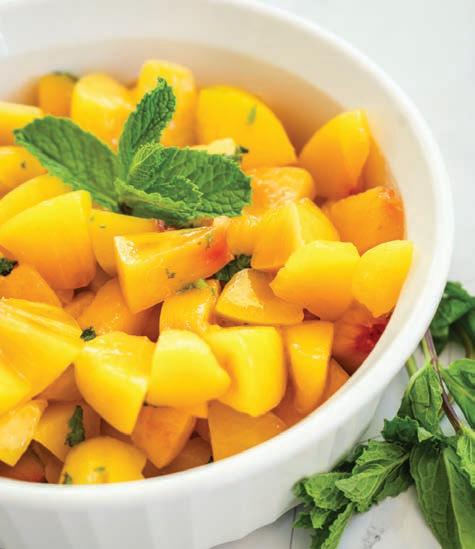
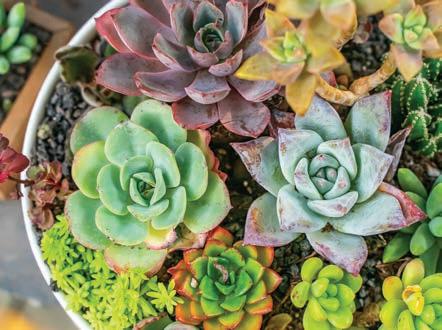

BLAIR SMITH








When I interviewed to be editor of HOME magazine, I brought in a little photo book that documented all the improvements we’d made to our 75-year-old house. Nothing fancy, but a lot of memories with before and after shots. Each page reminds me of long days painting and working with craftspeople to update our brick Cape Cod. I have a fairly extensive collection of photo albums because I am the self-appointed memory keeper of our family. Each book provides a testimony of a child growing up and of our family’s most fun adventures.
Summer may be one of the best times to make memories. Whether you enjoy baking a peach treat, relaxing by the pool with a good book or just gazing at the stars, we’ve got ideas for you! Start with Laurel Feinman’s piece on making the most of summer evenings by “choosing your own adventure.” Next, don’t miss the fabulous — and largely free — programs offered through your local library. Reading is a wonderful adventure for all ages!
Whenever possible, infuse your memories with delicious dishes — and don’t forget the peaches! Becky Calvert offers creative recipes to savor the “jewel of summer.” This issue, she also gives us some fun ways to make frozen pops — for kids and adults (think cocktails on a stick). There’s almost no end to the ways you can create Popsicles!
Our beautiful showcase home sits high above the Roanoke River but is down to earth, blending with the land around it. You’re sure to see many ideas that inspire!
Speaking of creating memories in a beautiful place, I’ve certainly done that at HOME magazine! While this is my last issue as editor, I have lined a bookshelf with articles and photos that have taught me so much about taking care of a home, a community and a life.

PHOTO: JAMES RIVER MEDIA
I’ve genuinely had so much fun working with HOME ’s writers, advertisers, nonprofits, interviewees and community friends who’ve made this a fabulous three
years for me. I want to extend a special thanks to Trish, Rich, Kira, Ashley, Katherine, Mari and the whole James River Media team for all of your support and kindness, especially in hosting The HOME Show (which began in October 2022). That was an adventure into a totally different medium for me — and I grew to love it!
I’m starting a new chapter, but I’ll continue to enjoy HOME as a reader. I look forward, with you, to all that is to come from this delightful publication that is a gift to our whole community. Here’s to new adventures and memories!
Donna Dunn
| donna@jamesrivermedia.com









Do you need more space and/or amenities but don’t want to pay current market prices or interest rates? Let TBS remodel your existing home to create something that will look and feel new in the same neighborhood that you love and without breaking the bank. We’ve been remodeling homes in your area for decades and we know how to deliver superior services on time and on budget without making your life complicated! Need inspiration or want to discuss options? Check out our website to see some of our previous remodels and hit us up on the contact us form.
























VOLUME 1 8 ISSUE 3
PUBLISHER
Trish Roth
EDITOR
Donna Dunn
ART DIRECTOR
Kira Rider
CONTRIBUTING EDITOR
Katherine Fulghum Knopf
CONTRIBUTING WRITERS
Mitzi Bible
Becky Calvert
Martha S. Coffey
Kate Ericsson
Laurel Feinman
Carrie F. Knopf
Katherine Fulghum Knopf
Margie Lippard
Kendall Atkins Livick
Christina Moore
Ashley Blair Smith
Ginny Smith
PHOTOGRAPHER
Kathryn Feldmann
GRAPHIC DESIGNERS
Donna Collins
Matthew McClay
SALES DIRECTOR
John Mazzei
ADVERTISING SALES
Kirsten Morey Becker
Lisa Bowers
Reid Ebert
Stephanie Ragsdale
Kenny Shelton
SUBSCRIPTIONS
Roanoke Valley HOME is published five times annually by James River Media, LLC. For an annual subscription, please send $20 and your name, address and telephone number to: Roanoke Valley HOME 109B Tradewynd Drive, Lynchburg, VA 24502
For advertising information please call (434) 845-5463 or email sales@jamesrivermedia.com.
To discuss coverage of an event relating to home or garden, please contact Roanoke Valley HOME at home@jamesrivermedia.com
JAMES RIVER MEDIA, LLC (434) 845-5463
Copyright 2025 by James River Media, LLC. All rights reserved. No part of this publication may be reproduced or transmitted in any form or by any means without written permission from James River Media, LLC. All pictorial material reproduced in this magazine, whether in a produced ad or by itself, has been accepted on the condition that it is with the knowledge and prior consent of the photographer or the artist concerned. As such, James River Media, LLC is not responsible for any infringement of copyright or otherwise arising out of publication thereof. The information contained herein has been obtained from sources believed to be reliable. However, James River Media, LLC makes no warrant to the accuracy or reliability of this information. Opinions expressed in this magazine are those of the authors and do not necessarily reflect the opinions of ownership or management.









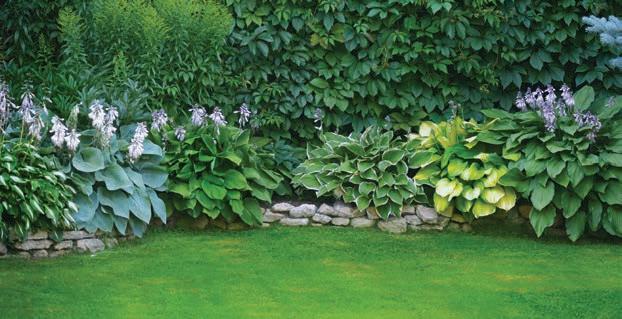
BY GINNY SMITH
Why do some plants thrive during prolonged hot weather while others wilt, turn brown, and barely bloom? The answer to this question lies in choosing the right drought-resistant annuals and perennials for the area. By selecting the perfect plants and following a few simple guidelines, you will have healthy flowers regardless of how much rainfall we experience.







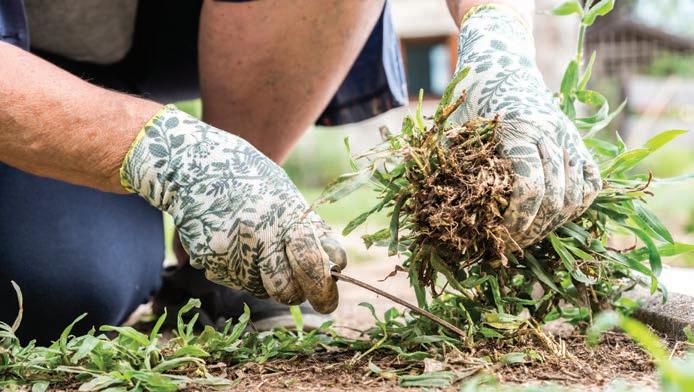
According to Evelyn Elwell of Walter’s Greenhouse in Hardy, “Drought-tolerant means they will require less water than other plants, but they still require water and fertilizer. They eat less at the dinner table, but they still need to eat and drink!” To maximize the chance of summer survival, follow these important strategies:
n Consider where you’ll plant. Select plants that are suitable for your specific growing conditions. For instance, how well does the soil retain moisture? How well does it drain? How much sunlight will it receive? You can improve soil performance by enriching it with compost, manure or mulch.
n Water in early morning or in the evening to minimize loss of water through evaporation. Keep new plants well-watered for their first season or two to allow them to develop that extensive root system. “To encourage deep roots quicker,” says Elwell, “dig a hole twice as big as the root ball, fill with water, put in the plant and pull the soil back to allow a good amount of water under the plant.”
n Provide shade. The combination of too much direct sun and heat will stress most drought-resistant plants. “If you plant near trees or shrubs, they are probably competing and winning the battle for water,” notes Elwell. “Mulch is a great option for help with water retention as it absorbs moisture; however, it is important to note that mulch is creating heat as it decomposes.” So, mulching at least 5 or 6 inches away from the plants provides some protection, but allows the plant to grow. Shade-loving plants can be placed near physical structures that will provide some shade during the hottest part of the day.
n Group plants together with similar needs for sunlight, nutrients and moisture. Space out new plantings so that they are not overcrowded. Plant smaller annuals and perennials that will adapt to the soil conditions faster and require less water.
n Keep weeds to a minimum to prevent competition with plants for the same moisture.
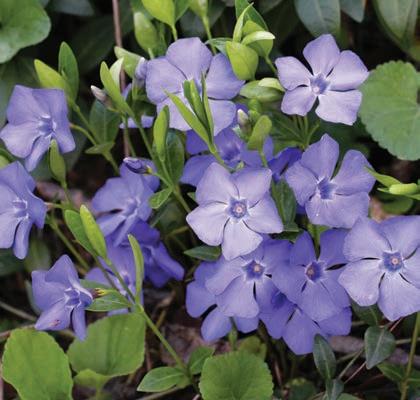

From plants to shrubs to succulents, summer survivors are plentiful. Take some time to wander through a local nursery and look for the colors and textures that will draw attention to your yard. Elwell has many suggestions for the perfect plants for the warmer months. “All the varieties I like to suggest require very little care,” she says. “No pinching, plucking or pruning is required. If they get larger than you want, you can always pinch them.”
Her favorites include vinca, also known as periwinkle, a popular choice for its abundant blooms and sweet colors.

“Mandevilla, evolvulus, and fibrous begonia are easy, drought-resistant annuals for summer planting,” notes Elwell. Mandevilla, flowering vines, make stunning additions to a trellis or a garden wall. Evolvulus, in the morning glory family, makes a cascade of sweet flowers. Fibrous begonias are packed with white, pink, red or rose blossoms.
Also, another good choice is the angelonia, a summer snapdragon, that produces beautiful spikes of mauve, purple, pink, blue or white flowers all season long. This lovely plant enjoys full sun, but can also tolerate partial shade as long as it gets at least 6 hours of sunshine.






Also, the agastache is a bushy perennial that produces orange, pink or blue flowers from summer to fall. This plant is deer resistant and can be planted in full sunlight. In outdoor pots or containers, the plant may require more frequent watering. Salvia, once established, is drought-resistant and requires little care. It prefers full sun, showing off red, lavender, white, purple, orange or pink flowers.
Lantana, a flowering plant, is known for its clusters of small, bright flowers that come in a variety of color combinations and scream “party” on each bloom. Butterflies and hummingbirds find their way to lantanas!
As for a watering schedule, Elwell suggests, “Water daily for the first week and then every other day for the next two weeks. Then, water as needed. Feed with water-soluble fertilizer for blooming plants every 10 days.”
Enjoy combining annuals and perennials to create a summer display that will offer pops of color throughout the season.
Shrubs
As for shrubs, forsythia and spiraea make beautiful additions to a summer yard. Though they bloom in the spring, the bushes stay fresh all summer. Boxwood is very popular any time of year. Junipers are also nice drought-tolerant shrubs that make a beautiful show in warm weather.
Your choices are many for shrubs to give your yard a fresh and colorful look.
Succulents
A discussion of drought-resistant plants wouldn’t be complete without suggestions for succulents. Elwell recommends portulaca, a low-growing succulent flowering plant. “The varieties propagated from cuttings are vast,” says Elwell. Hens and chicks, sedums, delosperma and yucca are also fun to have


in pots or planted in the yard. “Succulents are always a choice for drought-tolerance, but they are typically not flowering,” says Elwell. “Contrast of texture and color of the plant can be beautiful without the blooms.”
Low maintenance and low cost, succulents display a variety of shapes, colors and textures. Perfect for the beginning plant enthusiast, succulents are easy to care for and forgiving. They will succumb to overwatering, though, so be sure to check the soil. “It’s a misnomer that succulents like to be bone dry,” says Elwell. “They prefer to remain evenly moist, but not soggy.”
Throughout the summer, be on the lookout for plants that may need your attention. Perhaps the sun has taken its toll.
n Leaves tend to look dull and, as stress from lack of water increases, the leaves may curl or wilt.
n The plant may droop or drop open. At this point, the plant may not rebound even after receiving supplemental water or rain.
n Plant growth slows and may stop altogether.
n Flower buds may not develop or the buds may not open. If they do develop, the flowers may be smaller than normal.
If your plants do suffer from a heat stroke, add water and a balanced fertilizer to encourage restored health. A little tenderloving care may rejuvenate the hardier plants.
With the region’s humid summer and dry spells, droughtresistant plants that can survive through periods of low water are a necessity. By selecting the best plants and implementing the best practices, you can enjoy a beautiful yard and garden all summer long. ✦

Irrigation, Fiberglass Pools, Custom Water Features, and Seasonal Service—Done Right.

Whether it's a green, healthy lawn or the sound of a backyard water feature, Roanoke Landscapes delivers dependable, wellcrafted solutions.
Our Services Include:
Smart Irrigation Installs & Upgrades
Decorative Water Features & Pools
Zoned Custom Installs
Spring Startup, Winterization, & Repairs
Why Homeowners Trust Roanoke Landscapes
Over 20 years serving the Roanoke Valley
Fully licensed & insured crews
Systems designed for efficiency, longevity & local soil
Trusted by hundreds of satisfied homeowners


Effortless Water. Exceptional Outdoors. ROANOKE ROANOKE
LANDSCAPES LANDSCAPES
Live Outside Life
“I would ONLY recommend Roanoke Landscape for your new system. The crew was very courteous and thorough. There is an old saying“you get what you pay for”. With Roanoke Landscapes , you get more than you expect. We cannot recommend them enough!”
Book your free consultation today. Custom estimates, honest pricing, and a team who truly cares. 540-772-0079 | RoanokeLandscapes .com
You know the saying, “Don’t make it too comfortable or they will never want to leave”? Well, these visionary clients gloriously ignored that sage advice, creating a lakeside sanctuary that beckons guests to linger longer. There’s never enough room at a lake house — because everyone yearns to be there. This family has a beautiful residence on Smith Mountain Lake but found themselves perpetually short on space for their friends and family who flocked to their waterfront home.
Rather than limit their hospitality, they embarked on an ingenious solution: constructing a dual-purpose, 1,600-square-foot garage crowned with an 800-squarefoot apartment on the upper level. This thoughtfully conceived living space perfectly captures every essential element for an idyllic lake retreat without wasting a single square inch.



F&S BUILDING INNOVATIONS has more than 50 years of experience with thousands of satisfied residential customers throughout Central and Southwest Virginia. We’re a Class A contractor, which means we can facilitate your project from design to completion. And we have on-staff designers to guide you every step of the way.





A spacious wrap-around deck overlooking landscaped grounds features an inviting fire pit and putting green — perfect for sunset cocktails or morning coffee rituals. Inside, the living area has a great full kitchen with an eat-in island that naturally flows into a comfortable living room framed by glass doors that flood the space with natural light.
Practical luxuries weren’t forgotten. A convenient stacked laundry station stands ready to refresh damp towels after sun-soaked days on the water and to ensure guests depart with suitcases full of clean clothes rather than having laundry to take care of once they return home.
The lower level serves multiple functions — housing a standard garage, a fully-equipped workshop with storage and an oversized bay designed to accommodate an RV or large boat, ensuring that adventure is always just moments away.
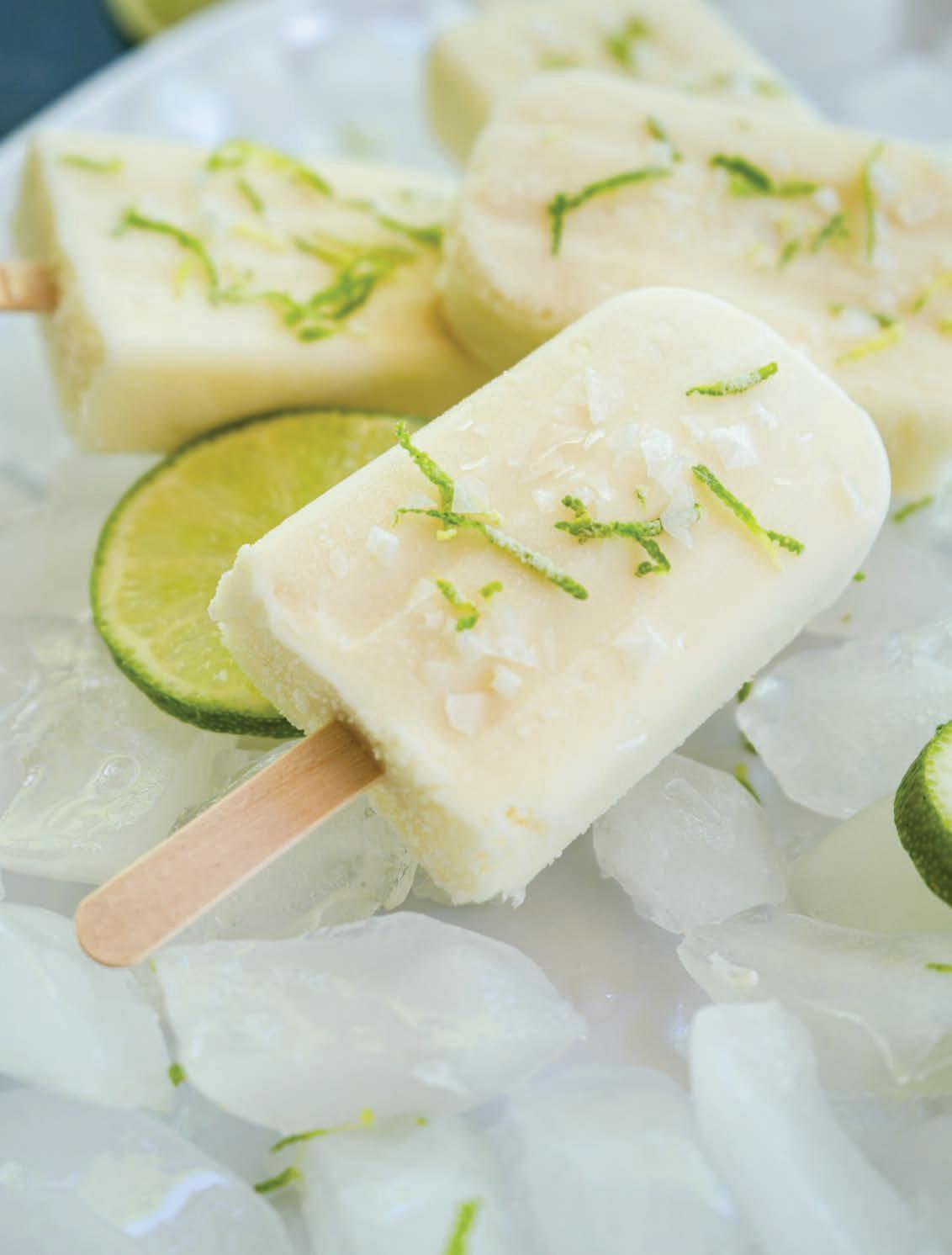
BY BECKY CALVERT | Photography by James River Media

There are some things that evoke summer to the kid in all of us: Fourth of July fireworks, baseball, lightning bugs and Popsicles. Those cold tasty treats of summer were actually invented by a kid. Back in 1905, then 11-year-old Frank Epperson left his drink with its stirring stick out on the porch of his San Francisco home one night. He found it the next morning, frozen solid, the stick acting as a handle of sorts.
Frank didn’t call it a Popsicle at first though. It wasn’t until 1923 that he realized no one else had come up with his frozen treat idea, so he patented “frozen ice on a stick,” which he called Epsicles. It was his children’s references to “pop’s sicles” (for their resemblance to icicles) that eventually evolved into Popsicles. Today, the Popsicle brand is owned by Unilever Corporation, but the name Popsicle is like Kleenex in that it has become the generic name for any frozen treat on a stick.




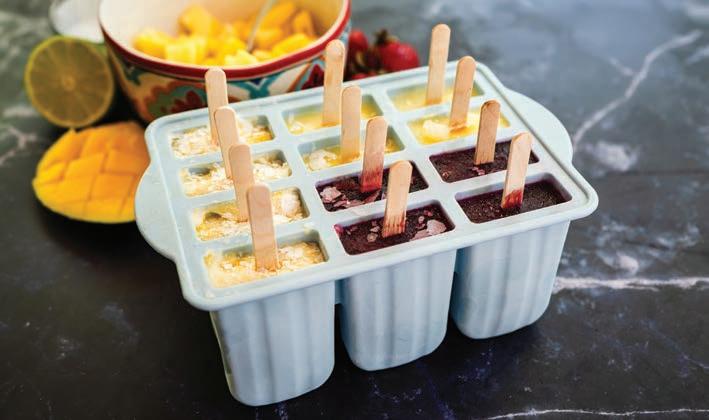
When they first debuted, Popsicles cost a nickel. The Great Depression saw the invention of the two-stick Popsicle, so that they could be shared with a friend. Over the years, other tasty treats like the Creamsicle and fudge pops were born, but neither have diminished the eternal popularity of the original. Cold and not suited well to travel, Popsicles are a relief during the heat of summer — an easy way to get essential liquids while also cooling yourself down. Sure, there’s ice cream and other delightful frozen treats, but one of the beautiful things about Popsicles is their simplicity. Take a liquid, any liquid like fruit juice or soda or even Kool-Aid, and pop it in the freezer with a handle. You can use a purchased silicone mold, but muffin tins, ice cube trays, even disposable cups will do in a pinch. No sticks? A toothpick, straw or small spoon can suffice. To loosen your Popsicle from the mold, hold it under warm water or rub it between the palms of your hands. Voilà. They’re that easy. Popsicle ingredients are not just limited to liquids. Puréed or mashed fruit, like strawberries or bananas, can make for good Popsicles. Pudding can be used for fudge pops. And then there are adult Popsicles, sometimes called “poptails” that have a little boozy kick to them. Here are a few ideas for making your own at home.
Use any bottled fruit juice, as is. Or, juice your favorite fruits, such as watermelon or grapefruit and pineapple. If you wanted to get super healthy, you could also make Popsicles out of juiced vegetables like carrots. You can also play around with adding various spices like ginger and turmeric or a twist of lime! Combine a variety of juices for a more interesting juice pop.
Peel and pit fruit before puréeing. If your purée is too thick, thin with fruit juice (apple juice is excellent with most fruits) and freeze. Strawberries, kiwi, raspberries, peaches, pineapples, mangos all stand-alone nicely. Or combine various fruits – pineapple, mangos and papayas make for a fun tropical fruit blend. Bananas can be mashed or frozen solid individually. Once frozen, dip the bananas in melted chocolate, then pop them back in the freezer for a chocolate banana treat.
Any type of yogurt works here, although full-fat yogurt makes for a creamier Popsicle. Add a sweetener like a teaspoon of honey if using plain or Greek yogurt, stir in some puréed fruit before freezing. To achieve a swirled appearance, don’t fully mix your flavors before placing them into the mold.

Make a box of instant pudding, pour it into your molds and freeze. OR, if you’d rather make it from scratch:
½ cup cocoa powder
½ cup sugar
1 Tablespoon cornstarch
¼ teaspoon salt
2 cups milk or non-dairy alternative (almond, soy, coconut)
½ teaspoon vanilla
Whisk together cocoa powder, sugar, cornstarch and salt, breaking up any clumps. Slowly whisk in liquid, ½ cup at a time until mixture is smooth. Bring to a simmer in a saucepan, stirring constantly, until mixture is thickened. (It should coat the back of the spoon.) Remove from heat, stir in vanilla. Stir occasionally as the mixture cools over the next few minutes. It should begin to thicken as it cools. Pour into molds and freeze.


Making wine pops is as easy as pouring wine directly into molds, then popping into the freezer. Add some berries or other fruit if you like. Sweeter wines work better here than dry ones so a Riesling, Moscato or sweeter rosé are all perfect for making wine pops.
Turn your favorite cocktail into a frozen one by simply pouring the contents into your molds. Bloody Marys, mojitos, margaritas, daiquiris, even a gin and tonic make for a great boozy pop. Play around with the addition of fruit, like a strawberry mojito or margarita. Add lime slices to your gin and tonic. Keep in mind that the addition of alcohol into your mix raises the freezing temperate, so keep the booze to other liquid ingredients to a 1:4 ratio. Cheers! ✦


BY KENDALL ATKINS LIVICK
Alan Jackson’s country song, “Where I Come From,” is a quintessential summer anthem. With references to cornbread and chicken and front porch pickin’ among other Southern traditions, the song nails the ambiance. But missing from these lyrics is the reality that before we can comfortably get to the pickin’ and chicken, we could use a little front porch sprucin.’
“Ambiance” is tough to put into words, but we all know that certain “je ne sais quoi” of summer magic when we feel it. It’s not so much a formula, as it is an immersive approach. With some simple steps, we can capture the vibe.
Before sprucin’ can even unfold, we must first tackle the cleanin’ tasks. When spring gives way to summer, she leaves a mess in her wake. But with some elbow grease, you can quickly sweep away grass, twigs and dust from the floors and ceilings, scrub away pollen and wash the windows. Other tasks might involve hiring a contractor.
Pressure washing, for instance, can brighten the walkway, foundation and house itself for a dramatic before-and-after effect. Consider whether upcoming projects will involve electrical wiring or flooring installation. Will you add a new pop of paint with one of the colors of the year? Prepping now will help you avoid redundancy later.



3245 Brightwood PL SW | Roanoke, VA 24014
Completely renovated, updated Tudor in a private South Roanoke neighborhood.

REALTOR ® Licensed in VA
C: 540-525-1844 | O: 540-989-0863
E: SusanBailey@LongandFoster.com
W: LongandFoster.com/SusanBailey
An area rug can act as both anchor and color palette. The porch spatial configuration will determine furniture placement.
With porches evolving in recent years to favor function over form, comfort isn’t an afterthought. Although slatted little bistro sets and iron benches may please the eye, the ole’ tush might need a little more cush for longer lounging.
Fortunately, outdoor cushions and throw pillows, can be much more affordable than their indoor counterparts. Slipcovers can offer protection from dirt, sweat, pool water, etc. Maybe in your quest to make your porch more inviting, you’d like to splurge on special seating, like a swing, egg chair, dining set or hammock for midday reading and napping.
Alternatively, you could rearrange outdoor couches, loveseats and chairs that you already have. Facing furniture pieces inward can transform your porch from a nature observatory to a conversation space. Decorative swap-outs can drastically change the overall style.
In the spirit of novelty when rearranging, why not play with asymmetry? Change up a traditional front door framing technique (with identical sconces and plants on either side), for instance, with a cluster of plants on one side and a bench on the other. Thinking outside the box can strike a spatial balance that feels more “lived in.”

1201 Ivy ST SE | Roanoke, VA 24014
Stately Historic Roanoke home on 3 lots. Eligible to be added to the National Historic Register.

A: 5324 Fallowater Lane, Suite 100 | Roanoke, VA 24014

Picture this
Start with a foundational layout comprised of a jute rug and rattan furniture, and try these three styles for your front porch:
n Modern Farmhouse:
Group together oversized floor lanterns, along with accessories like a wooden slab side table and a rustic watering can, spilling out over the top with roadside wildflowers.
n Coastal Cowgirl: Install vintage nautical sconces, and curate a row of potted herbs on the window ledge. Hang a windchime, handmade of driftwood, fishing line, seashells and turquoise painted clay figures. If you’re an equestrian, further accessorize with a vertical gallery wall of collected cowboy hats. This is a fun one for those with a ranch-style abode, who have a heart for both lake life and agriculture.
n Mediterranean:
Moroccan pendant lights can illuminate the ceiling with geometric patterns. Incorporate blue stainedglass bottles and vases, sunflower motifs and large-scale terracotta pots holding miniature boxwood trees.


When the sun goes down, lighting can give your porch a second wind — setting the stage for a block party, friendly catch-up session or a romantic summer lovin’ kind of evening.
Central lighting may already include a flush mount or lit ceiling fan. Work in additional ambient, task and accent lighting, and you might as well dub yourself a true summer ambiance alchemist.
Lanterns, rustic chandeliers, pendants and sconces provide a warm glow. String lights can cascade from the ceiling or wrap around rails, columns, miniature trees and bushes. Solar lights are a hassle-free, eco-friendly option for lining a walkway or casting a subtle spotlight at the base of plants. They can come in different forms, including fairy lights, domes, stakes, faux candles and more.
The era of maximalism has inspired innovative coziness through texture and dimension. Airy fabrics like cotton and linen, natural wood and stone and pops of joyful and bright colors are some of the best ways to celebrate warmer months.
Colorful flowers scream summer. Bright choices for summer blooms include roses, daylilies, cardinals, coneflowers and creeping phlox. Potted herbs can double as neutral greenery, as well as a tasty garnishing for summer salads.
Handmade details are the heart and soul of porch personalization. Whatever strikes your fancy, infuse your creativity into floral arrangements, wreaths, windchimes, birdhouses, window boxes and more. Recruit kids and grandkids for these artistic projects to create memories over decorative keepsakes.
After all the sprucin’, it’s time to kick back. Let’s get to the front porch sittin’, and I personally wouldn’t mind if you brought over a bucket of chicken! ✦



BY MARTHA S. COFFEY
Moving into a new home is a life-altering event, making careful planning crucial. To mitigate the many stressors of a move, begin by identifying the numerous associated tasks and then making checklists to guide you through the two-part process. Research reveals that the tasks involved in moving to a new home can easily be divided into those to do before you make a move and those you need to do after you move in. Use the tips below to help get you started.
The sooner you start completing the many tasks in this first phase, the more smoothly you can expect the move to go. It is widely recommended that you allow two full months to prepare for your move and keep in mind that there may be obstacles along the way, necessitating flexibility.
1
Do a walkthrough and purchase packing supplies. Walk through your new house while it’s empty. Seeing it as a blank canvas will help you envision how and where your belongings will fit in. Unless your Realtor has provided you with a set of blueprints, take a clipboard and tape measure and
sketch each room, adding measurements and placement of windows and doors. As you move from room to room, verify that everything is in working order, noting problems to report to the proper entities for amelioration.
Once home, purchase packing supplies, measure your furniture and other large pieces and decide on their placement in the new house. Note this on your graphic and on tags with their intended locations. Affix these tags to the various items so the movers will know where to place them. With the tagging of the large pieces complete, begin the arduous job of boxing all your possessions and labeling the boxes to show their contents and the rooms to which they should be delivered.









2
Change your address.
Notify every entity with which you do business about your new address. Also, remember to arrange for mail forwarding, and register to vote in your new precinct. A move out of state will require that you also register your car in your new state and get a new driver’s license.
3
Secure your new property.
Immediately after closing on your new home, change all the locks and re-register an existing security system in your name or have a new system installed. Test fire extinguishers and sprinklers, as well as smoke and carbon monoxide detectors to confirm they are operational. Childproof your home if you have small children, and engineer a secure environment for pets. If your new home has “smart” features, be sure to get passwords from the existing homeowner or have them reset devices such as thermostats so you can create your own log-ins.
4
Arrange services.
Schedule utilities to be turned on, set up internet and cable service and procure trash removal and recycling services.
5
Make necessary repairs and renovations
Contract to have interior repainting done and flooring replaced if you can’t do this yourself. Interior renovations are always best done prior to moving in. Schedule this work well ahead of your move-in date to allow for delays. Exterior renovations and landscape improvements can be completed after the move without disrupting family life.




6
Schedule a deep cleaning.
This could involve a cleaning service, carpet steaming or both! You might also rally your own team of DIY cleaners from friends and family.
7 Take photos.
Before the moving van arrives, take pictures of your empty house. This way if something is damaged during the unloading and carrying in of your belongings, your photos will help determine who should bear the repair costs. Once the van has been unpacked, be sure to inspect your belongings for breakage, and photograph anything that was damaged in transition. These photos will be important if you need to file an insurance claim.
After the move
8
Unpack priority items first.
Once all your possessions have been unloaded and carried to their proper rooms, take time to outfit the bathrooms and kitchen with the necessities before beginning to unpack boxes in other spaces. Realtor.com suggests that you pack one set of


bed linens for each bedroom in a special box, so that beds can easily be made up for the first night in your new house. Resist the temptation to try to do all the unpacking at warp speed. A slower, measured pace will produce better results.
9 Stock the refrigerator and pantry.
Take a quick trip to the nearest grocery store or place an online order for pickup. Get enough of the essentials to last several days. If you have children, consider allowing them to suggest some of their favorite foods for purchase. Make your first meal in your new home a memorable one, and document it with photos.
10 Settle in.
In addition to relocating all your material possessions, a transition to a new house should also include getting to know your new surroundings. Take time to drive around, and note the locations of schools, churches, medical practices, stores of different types and other places to explore.
Bear in mind that settling into a new house is a process that may take quite some time to complete, but careful planning and patience will result in a higher quality of life for all involved. ✦


BY LAUREL FEINMAN
Back in the 1980s, I spent my summer camp days eagerly swapping and reading “Choose Your Own Adventure” books. With every turn of the page, the decisions I made shaped the story’s outcome, and the excitement of not knowing what would happen next was unmatched. Much like those books, a summer evening can be yours to shape. Whether you crave a cozy night at home, an adventurous outdoor escape or discovering what’s happening in your local scene, the choice is yours. Let the adventures begin!




Sometimes, the perfect adventure is a quiet evening in your own backyard. If you’re in the mood to unwind and relax, transform your space into a tranquil retreat where you can embrace the calm of the evening.
Set the scene: String up fairy lights or lanterns to illuminate the night with a soft, magical glow. Lay out blankets and cushions, creating a cozy nest for everyone to gather. Light a few candles or citronella torches to enhance the ambiance and keep the bugs at bay.
Re-Bath offers complete remodels, not just cover ups. Our team will work with you through design, product selection, demo, and installation to create a bathroom you’ll love.
off
A Contractor #2705111539




n DIY movie night: Imagine lying back under the stars with your favorite film on a big screen, the gentle hum of the projector adding to the evening’s charm. Whether you’re using a portable projector (make sure it has at least 2000 lumens for a clear image) or streaming from your phone with a Bluetooth speaker, movie night is a classic. Choose nostalgic favorites like:
l The Sandlot (1993)
l Honey, I Shrunk the Kids (1989)
l Troop Beverly Hills (1989)
And relive those carefree summer days through film.
n Fire pit fun: There’s nothing like gathering around a crackling fire, roasting marshmallows and telling stories. Create an inviting space with your favorite summer treats — hot dogs, pineapple chunks, corn on the cob — and enjoy good company. Essential tools for this activity:
l Skewers for roasting
l Long tongs for handling food safely
l Water or sand for extinguishing the fire
l Wet wipes for easy cleanup after the fun
n Night photography: Summer evenings are a perfect time to capture the beauty of twilight. Photograph July 4th fireworks or capture fireflies humanely — with your smartphone! Your smartphone’s Night Mode setting and a tripod will help steady your hand so you can relive the adventure each time you look back at your pictures. Check out YouTube or Instagram for quick and easy tutorials for nighttime photography.


Explore the great outdoors
Embrace the natural beauty of a summer night. The cool evening air and the quiet of nature make for the perfect adventure away from the city.
Set the scene: Lace up your sneakers, grab a flashlight (or headlamp) and pack a small bag with essentials — water, snacks and a blanket. Whether you’re headed to a secluded spot for stargazing or riding through a quiet trail, the great outdoors awaits.
n Stargazing: There’s nothing quite like lying on a blanket and gazing at the night sky. Use apps like Night Sky or Star Tracker to identify constellations and catch celestial events like the Perseids Meteor Shower. Head to places like:



l Claytor Nature Center’s Belk Astronomical Observatory (near Bedford)
l Natural Bridge State Park (visit dcr.virginia.gov for details)
l Peaks of Otter (Blue Ridge Parkway) ... for the best view of the stars.
n Nighttime bike ride: Feel the evening breeze as you ride your bike under the moonlight. Add LED lights to your bike to make it shine in the dark, and consider taking a longer ride along a scenic route.
n Moonlit picnic: A picnic under the stars is pure magic. Pack your favorite snacks — cheese, fruits and sandwiches — and bring refreshing drinks like Arnold Palmers, peach iced tea or lemonade. Spread out your blanket, relax and







DIY sidewalk chalk
Get creative with your own vibrant sidewalk chalk using just four simple ingredients.
3-5 Tablespoons washable tempera paint (liquid or powder)
½ cup water
¾ cup Plaster of Paris (dry powder)
Silicone molds (various shapes and sizes)

Mix tempera paint and water in a disposable cup. Gradually add the Plaster of Paris, stirring well. Adjust consistency by adding more plaster if it’s too runny or more water if it’s too thick. Pour the mixture into silicone molds and gently tap to release any air bubbles. Let the chalk dry overnight for best results


Dive into the local scene
There’s no shortage of excitement right in your own city. Take advantage of summer events, music and local happenings to make your evening unforgettable.
Set the scene: Check out local event listings or wander downtown to see where the night takes you. From live shows to food markets, you never know what you might find.
ACTIVITY IDEAS:
n Outdoor performances: Whether it’s live music, theater or dance, summer evenings bring vibrant performances to the outdoors. Enjoy a free show at your local park or waterfront; or purchase tickets to a professional performance like Shakespeare’s Hamlet by Wolfbane, and feel the energy of the crowd.
n Night markets: Explore local night markets for food trucks, artisan goods and entertainment. Some of the best food truck food courts in the Roanoke and Lynchburg areas include:
l 4th Street Eats in Salem (602 W. 4th Street, Salem)
l The BackYard in Forest (15173 Forest Road, Forest)
n Rooftop vibes: For an elevated experience, head to one of the local rooftop bars. In Roanoke, Six and Sky Rooftop Grille offers sweeping views of the Star City. In Lynchburg, visit No. 7 Rooftop Bar or Skyline at The Virginian for great views. Sip your favorite drink as the sun sets.
OPTION 4
Embrace your inner child
Sometimes the best adventure is simply reconnecting with your playful side. Let loose, and indulge in nostalgic summer activities that bring back those carefree memories. Set the scene: Gather your friends and family, and embrace the whimsy of summer with fun games and creative projects.
ACTIVITY IDEAS:
n Glow-in-the-dark games: Take the fun to the next level with glow-in-the-dark capture the flag, a glow-stick scavenger hunt or a classic water balloon fight. Most local golf courses and putt-putts even offer night golf with glowing golf balls — ask your favorite local course for details.
n Ice cream crawl: Take a sweet stroll through your town and sample the best ice cream spots. Try new flavors or create a friendly challenge to pick the wackiest flavor combo.
n Get creative: Let your imagination run wild by making friendship bracelets, creating sidewalk art with homemade chalk or belting out your favorite tunes at karaoke. Check out the recipe for homemade sidewalk chalk at left!
Make the most of summer nights
Whether you’re roasting marshmallows, stargazing or taking a sunset stroll, summer evenings are the perfect time to unwind and make lasting memories. Each summer night holds the potential for a new adventure — what will yours be? ✦
HOME Magazine helps your messages reach consumers ready for your products and services. In the fall of 2024, Eastlan Ratings sampled area residents ages 35+ and found HOME to “significantly outperform” the local media market in audience quality and purchasing influence.
HOMEOWNERS
AUDIENCE PREFERENCES & PLANS
NUMBER OF HOME MAGAZINE READERS PER ISSUE
DISTRIBUTION

Targeted direct mail

Mass distribution

Online
EXCLUSIVE HOME & GARDEN MAGAZINE SINCE

AUDIENCE INTERACTION WITH HOME MAGAZINE
PREFER LOCAL BUSINESSES TIME INVESTMENT


We don’t reach just any audience — we connect with your best customers. Let us help your business soar in 2025!
About 40% of the food grown in this country is never eaten; much of it is left in fields after harvest, dumped into landfills or thrown away at supermarkets, restaurants and homes.
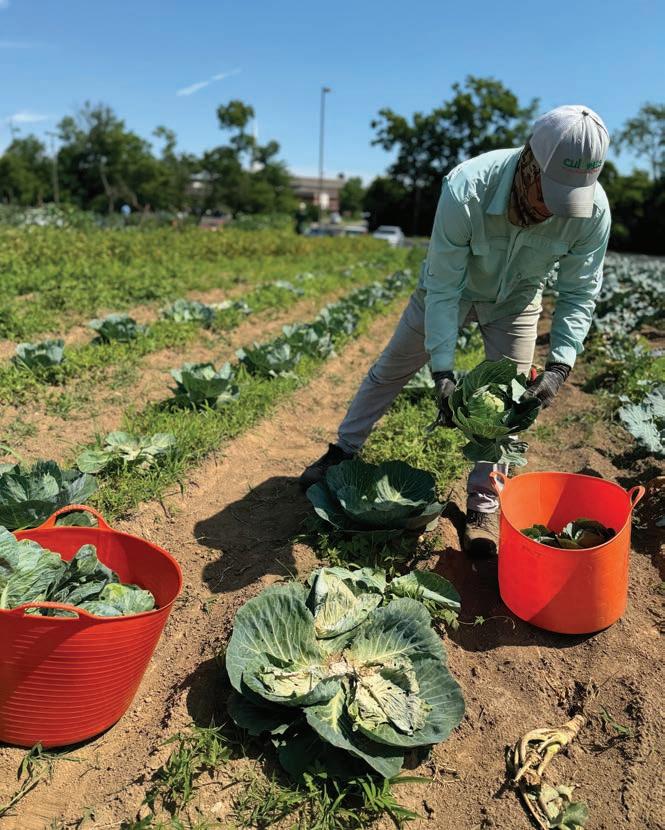
The Society of St. Andrew (SoSA) brings people together to harvest and share healthy food, reduce food waste and build caring communities by offering nourishment to hungry neighbors. SoSA rescues good, nutritious produce that would otherwise go to waste and makes sure it feeds people instead. James River Media’s Mari White talked with SoSA’s Virginia Regional Director Chesley Vohden about the mission to do better with the abundance we already have.
Mari White: Chesley, how did the Society of St. Andrew first become active in the Roanoke area, and what kind of work are you doing locally today?
Chesley Vohden: The Society of St. Andrew (SoSA) is a national hunger relief organization with 10 regional offices across the USA. In 1979, it began as a grassroots effort in Big Island, Virginia, by two ministers who saw the two problems of hunger and food waste. They began preaching in churches in Roanoke asking farmers to donate their leftover produce after the harvest, and SoSA would feed hungry people with it. Second Presbyterian Church, Windsor Hills UMC and Thrasher Memorial UMC in Roanoke have partnered with SoSA for more than 32 years! Today, volunteers help pick, dig or gather fresh produce to share with food pantries, soup kitchens, food banks and underserved communities. This January, SoSA partnered with the Roanoke Police Department and distributed 42,000 pounds of potatoes to agencies around Roanoke and to individuals. The event was so successful that we will partner for another crop distribution in June!

Mari: What types of produce are most often gleaned, and what happens next?
Chesley: In Virginia, SoSA volunteers glean apples, collard greens, cabbage, corn, turnips, sweet potatoes, peaches, strawberries, blueberries, blackberries and watermelons, to name a few. SoSA volunteers also glean Farmer’s Markets. The fresh food goes directly to individuals and agencies serving our neighbors in need. Nothing stores in a warehouse to spoil. The food moves quickly because we know the need is immediate.

Saturday, June 21 9-11:30am or 11:30-1:30pm

Hey Roanoke! Do you want to volunteer, feed hungry people and have fun?
The Society of St. Andrew is partnering with the Roanoke Police Department for a drive-thru crop distribution in Roanoke. Sign up here to volunteer to bag the fresh produce, greet recipients and give away healthy food!

Mari: Tell us more about the partnerships you’ve developed that help your mission.
Chesley: Everything we do relies on relationships. Local farms generously open their fields. Congregations and other groups send volunteers and help make deliveries. We work closely with regional food banks and hunger relief partners to make sure the food reaches the right places. Everyone plays a role in creating a network of support for those in need.
SOME OF SoSA’S PARTNERS:
Bryant Orchards
Christian Soldiers Food Pantry
RAM House
Roanoke City Schools
Roanoke Police Department
Roanoke Rescue Mission
Roanoke Women’s Foundation
The Salvation Army
Episcopal Diocese of
Southwestern Virginia
Genesis UMC
Journey Church
Red Valley UMC
Salem Presbyterian
Second Presbyterian
Thrasher Memorial UMC
Windsor Hills UMC
Mari: How else does SoSA help strengthen our community here?
Chesley: There’s something special about working sideby-side in a field, knowing the food you pick will help feed a neighbor. When people come together to serve others, it builds connection. That’s why we encourage everyone to become involved. We have numerous opportunities for gleaning that are flexible, family-friendly and meaningful!
DID YOU KNOW?
About 15% of families in Southwestern Virginia struggle to access enough food for their families.

DID YOU KNOW?
The Society of St. Andrew offers a simple solution: rescue surplus food and get it to people who need it!
10,920
Tons of nourishing food kept out of landfills
7,663,144 Servings provided
5,551 Volunteers
289 Recipient agencies
1
Billion pounds of food shared across the USA since 1979
$1
Provides 20 servings of healthy food
In with the old — and the new
BY MARGIE LIPPARD

Sustainability and “granny chic” are trending design themes, so it’s not surprising that antiques are basking in the spotlight in contemporary homes. Many homeowners, however, struggle with deciding how to place their treasured family heirlooms and vintage finds next to their modern pieces. Layering antique, vintage and modern pieces curates a harmonious yet buoyant aesthetic, connected to the past yet celebrating the present. You don’t have to quarantine your antiques into one side of a room to display sentimental favorites nor purge antediluvian inheritances in a mass-produced extreme makeover. Instead, mix the old and the new to fashion a fresh look that exudes character and transcends time.




When clustered into separate period rooms, antique and vintage furnishings can look downright funereal while modern furnishings border on the banal and monochromatic. When artfully blended together, however, their alchemy is enchanting. TheSpruce.com defines an antique as at least 100 years old; vintage is less than 100 years old but more than 20 years old; and modern design is current or less than 20 years old. Whether circa 18th or 21st century, furnishings and accents from different eras enrich your home’s ambiance with personality and historical context.
For tips to mix the old and new, try dusting off your interior design textbooks and testing some old-fashioned maxims. The “80/20” rule advocates using 80 percent modern pieces and 20 percent antique or vintage pieces when furnishing a room or vice versa, depending upon the epoch that you are accentuating. The “golden ratio” says that filling 60 percent of a room and leaving 40 percent vacant will engender a spacious and airy feel. Finally, the “rule of three” suggests that displaying items in odd numbers kindles balance and eye-catching interest.






Antique, vintage & modern
Handcrafted antiques built from solid wood like cherry, mahogany and walnut often have flowing lines, sinuous curvilinear elements and ornate flourishes that make them showstopping focal points in a room. For example, an antique mahogany table shines as a dramatic statement in the center of a dining room, yet it gains proportion and scale when surrounded by minimalist modern seating and illuminated by soft vintage lighting. Some heavier antiques like a china hutch or armoire look best in a corner or by a wall while a richly textured rug with saturated hues anchors a room’s ambiance, which otherwise is awash in modernity.
When positioned as smaller accent pieces, antique and vintage pieces infuse subtle warmth and depth into a contemporary décor. In a living room or family room, a modern leather sofa paired with vintage end tables and an antique coffee table creates a layered, cozy look. Fireplace mantels are a great venue to mount vintage vases, antique brass candleholders and framed family pictures that tell a story. Antique gilded mirrors and sconces, silver tea sets with polished patinas, and glass chandeliers add a timeless elegance to any room.
Linking past & present
A cohesive color palette and contrasting patterns can interweave a room’s traditional and modern elements into a rich visual tapestry. Whether saturated with bold colors or showcasing soothing pastels, a consistent color scheme displayed in upholstery fabrics and accessories like throw pillows, curtains and art unifies a setting’s ambiance. Contrasting patterns, shapes and textures — ranging from 19th century chinoiserie ceramics and chintz fabrics to Gen-X homemade needlepoint pillow covers — spark a buoyant artistic combination of the antique, retro and contemporary. Even juxtaposing the flowing lines of brown wood antiques with the sleek lines of contemporary furnishings connotes a connection between the past and the present.
PHOTOS: MICHAEL PATCH

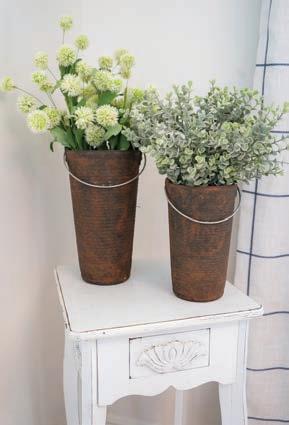
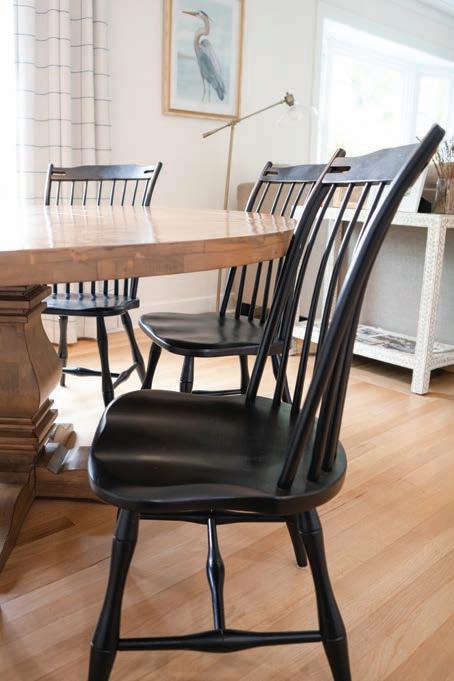

If you love DIY projects, refinishing antiques and vintage pieces will give you the satisfaction of reviving their beauty and extending their longevity. When you refinish furniture, you strip the furniture’s finish, sand it, stain it, and, in many cases, paint it with a new color. Try reupholstering antique and vintage seating with contemporary fabrics: Bold stripes enhance the shape of a rocking chair or settee while florals soften the lines of straight-back chairs.
When you mix antique, vintage and contemporary furnishings and accents in your home, there are no hard and fast rules to follow. But with the help of some classic design notions like balance, proportion and scale, you can display your treasured heirlooms and vintage prizes amidst your contemporary furnishings and create a fresh, harmonious look that reflects your style and your story. ✦
Bring a whole new look to your kitchen without having the mess and expense of ripping out your existing cabinets.
Whether you want a warm, traditional look or a modern, two-toned style to your cabinets, N-Hance will deliver a long-lasting, quality finish.















BY CHRISTINA MOORE
Remember the first time you spotted a ladybug as a child? That small red dome with black spots likely brought a smile to your face — and for good reason. That tiny visitor wasn’t just charming; it was on a mission to protect your garden. While many of us instinctively reach for spray bottles at the first sign of insects, some of these sixlegged visitors are actually working tirelessly on our behalf.
The unsung heroes of your garden fall into three distinctive categories, each playing a crucial role in maintaining balance:
n Pollinators transform your garden from merely green to gloriously productive. Butterflies, bees and certain beetles ensure your flowers bloom brilliantly and your vegetable plants produce abundant harvests.
n Predators act as your garden’s security team. Ladybugs, green lacewings and praying mantises patrol your plants, hunting down destructive pests before they can cause damage.
n Parasitoids might sound like science fiction, but these specialized insects (typically certain wasps) lay eggs on pest insects, controlling populations naturally — nature’s most elegant form of pest management.

Creating your insect sanctuary
Transforming your yard into a haven for beneficial insects is simpler than you might think:
EMBRACE DIVERSITY
Include flowering plants that bloom in different seasons, mix heights and textures and incorporate native species whenever possible. Plants like yarrow, coneflower, cosmos and dill are particularly attractive to helpful insects.
DESIGNATE A WILD ZONE
Allow a corner of your yard to remain slightly untamed. Leaf litter, fallen branches and unmowed patches create crucial shelter for overwintering insects. Read more about chaos gardens on page 66.

PUT DOWN THE SPRAY
Even organic pesticides don’t discriminate between helpful and harmful insects. Focus instead on building plant health through proper soil care and appropriate watering. Healthy plants naturally resist pest pressure.
ADD WATER FEATURES
A shallow dish with pebbles and fresh water provides a crucial drinking station for pollinators. For more impact, consider a small pond — it will attract dragonflies while creating a focal point for your outdoor space.
PLAN FOR CONTINUOUS BLOOMS
Early spring bulbs, summer perennials and late-blooming asters ensure there’s always something on the menu for beneficial insects.







When pest problems surge faster than natural predators can respond, purchasing beneficial insects offers a quick solution.
n Ladybugs arrive in mesh bags, ready for evening release when temperatures cool. Mist your plants first, giving them both water and incentive to stay.
n Green lacewing eggs come on cards you can hang throughout your garden. When they hatch, the larvae immediately begin hunting.
n Praying mantis egg cases resemble small, tan foam balls. Hang them in shrubs where they’ll hatch when temperatures warm, releasing dozens of tiny hunters.
Success tip: Released insects stay put only when your garden offers what they need: food, water and shelter. Create the right environment before bringing in reinforcements.
Few things capture a child’s imagination like watching a caterpillar transform or seeing a ladybug take flight. Start a bug journal where kids can sketch their observations. Create a butterfly garden together, planting milkweed for monarchs and watching their complete lifecycle unfold. Hold evening “moth parties” by hanging a white sheet and shining a flashlight on it. Children who learn to see insects as fascinating rather than frightening develop a deeper connection to the natural world and become environmental stewards.

When you welcome beneficial insects, you’re creating a functioning ecosystem where balance replaces constant intervention. As butterfly populations struggle nationwide, your milkweed patch becomes a crucial refueling station. As native bee species face habitat loss, your flowering plants provide essential resources.
The transformation doesn’t happen overnight. A thriving beneficial insect population builds gradually as your yard becomes known as a place worth visiting. But the rewards — fewer pest problems, better pollination and moments of unexpected wonder — make the patience worthwhile.
After all, there’s something profoundly satisfying about working with nature rather than against it. And it all starts with welcoming rather than fearing the buzz, flutter and gentle movements of the tiny allies all around us.

Ladybugs are superheroes in disguise. A single ladybug can consume up to 5,000 aphids during its lifetime, protecting your roses and vegetable plants from these sap-sucking pests.

Green lacewings may look delicate, but their larvae have earned the nickname “aphid lions” for their voracious appetite, tackling everything from mites to small caterpillars.


Praying mantises are master ambush predators. Their distinctive front legs can snatch flying insects mid-air, and they’ll eat almost anything that moves through your garden.

Dragonflies are exceptional mosquito hunters, making summer evenings more enjoyable while bringing aerial grace to your garden space.

Butterflies bring both beauty and function. As they sip nectar, they transfer pollen between flowers, ensuring robust blooms and healthy plant reproduction.

Ground beetles and spiders may not win beauty contests, but their nocturnal hunting of slugs, snails and soil pests keeps your garden healthy from the ground up. ✦
Residential and Commercial CONSTRUCTION SERVICES



BY KATE ERICSSON

Andrew Carnegie, Scottish-born industrialist and philanthropist, funded many public libraries in the United States because he believed everyone should have access to books and literacy, not just the wealthy. He built 1,700 libraries across the nation before his death in 1919. In this digital age, we sometimes forget the vital role libraries play in our society, beyond just being a place to borrow books. Libraries are vibrant community hubs, offering programming and special events free of charge.
‘Color Our World’ Summer is the perfect time to engage with your library. With schools out of session, libraries offer a plethora of fun and free
programming for children and adults alike. Research shows that children who read for pleasure in the summer do better and forget less when they go back to school. And it’s not just in reading. Kids who don’t read over the summer can slide backward in all subject areas. This means the summer months and other breaks from school offer great opportunities for families and caregivers to encourage academic success.
Once again, local libraries, including Roanoke and Bedford, have collaborated with the national nonprofit Collaborative Summer Library Program and the Library of Virginia to launch this year’s theme: “Color Our World.” The program is designed to inspire and engage readers of all ages through a diverse array of artistic expressions.


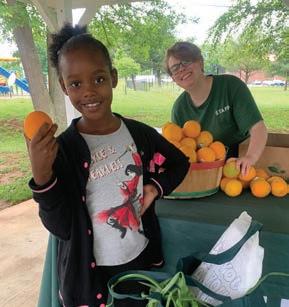
Roanoke libraries
Amber Lowery, Assistant Director of Youth and Family Services, has planned summer programming showcasing local talent and institutions. “We really pride ourselves by using local Roanoke Valley artists, agencies and grassroots resources. Our programming allows people to feel proud of their community. I believe we are a gem. Roanoke loves its libraries.”
They are collaborating with the Taubman Museum of Art and the Mo Willems “Opposites Attract” exhibit coming to Art Venture to provide hands-on experiences exploring color, shape and sculpture. They will also be partnering with Mill Mountain Theatre to engage with the musical “Rainbow Fish” and inspire original artwork. Other local headliners include Touch A Truck, Little Critters Petting Zoo, The Larsen Family Reptile Show, Science Heroes, Mill Mountain Zoo, We Throw Foam from Lynchburg and Circus Adventure from Floyd. A special Smash Brothers Tournament is set for July 17, during which competitors can win a gaming system or large gift card prizes donated by local businesses. To reach families, there will be evening programs including Father’s Day photography in June.
Roanoke public libraries offer an invaluable community resource: Read & Feed. They provide lunch and a snack at all six branches twice a day all year round. Partnering with Feeding Southwest Virginia, they provided more than 56,000 meals in 2024. In the summer, they offer kids’ farmers markets where they can use play money to buy fresh produce with recipes. This will happen 10 times over the summer at all six branches.









For Cassandra Baldwin, Bedford Public Library’s Youth Programming Director, who serves six different branches, planning for the summer is one of the best parts of her job. “I get so excited when I present to the Board in the spring!” she says.
Many of the programs and classes will cater toward art and creativity. Do Art Productions — a nonprofit whose mission is to “inspire creativity within everybody” — will be leading a comic book workshop. There will be a teen art night at the Bedford library and painting at the Forest and Moneta branches. Other popular programs that will be returning are

The Larsen Family Reptile Show out of Waynesboro, Heritage Apiary’s Honey Bee Outreach out of Blue Ridge and Farmer Minor and his beloved pot-bellied pig Daisy hailing from Bristol, Connecticut.
Children of all ages are invited to join a longstanding reading challenge where they will register, read books of choice and do outside activities. The age groups for this challenge are 0-5, 6-11 and 12-17 years old. Participants can earn badges and win raffle tickets to enter for the grand prizes from local community businesses and restaurants, such as Sonic and Golden Corral. The libraries use the Beanstack platform (beanstack.com) for tracking, but paper logs are still an option.
A library card is your free ticket to all events this summer. It’s simple to get one: present a valid photo ID and proof of current address. Make a weekly trip to your local branch a priority to ensure a fun, educational and inspiring summer. ✦





















BY KATHERINE FULGHUM KNOPF | Photography by Kathryn Feldmann

Sitting high on a hill that overlooks the Roanoke River as it flows toward Smith Mountain Lake, Lisa and Art’s country house blends in with the land surrounding it. Built on 9.5 acres with both open and wooded spaces, the gardens and the home give a nod to the homeowners’ talents. Built in 2017 by D. Dalton, the home’s Southern Living plans were expanded to accommodate the furniture and antiquities from two households.
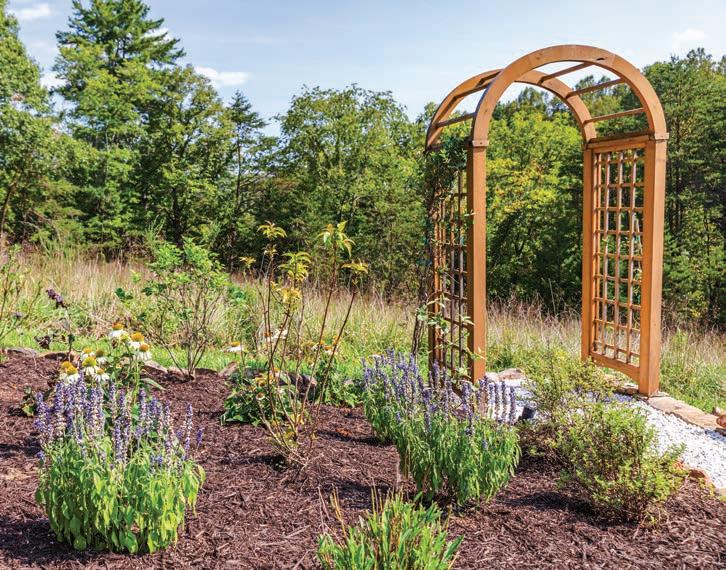





The home’s open floor plan offers a chef’s kitchen that extends into a large living area with a fireplace. “We spend all our time in the living room and the kitchen,” Lisa says. Art designed the kitchen space and built all the exquisite maple cabinets. They constructed two islands — one for Lisa and one for Art — and each island contains its own sink. They used a matching faucet style and color to unite the design.
Lisa chose black metal-andglass lanterns to hang over her cooking space as it opens into the living room. Art’s prep island, placed in between Lisa’s island and the back wall of cabinets that holds the stove, is the center of the kitchen. There, sleek cabinets with arched glass doors hold beautiful, cut-glass stemmed wine glasses and colored glassware. The prep island is topped in a rich, dark butcher-block top, which he made himself. Piece by piece, he created this countertop from an 8-foot solid section of walnut wood. Art also fabricated a large open cabinet over the refrigerator to display cookbooks and hold his extra-large bright yellow Le Creuset Dutch oven.



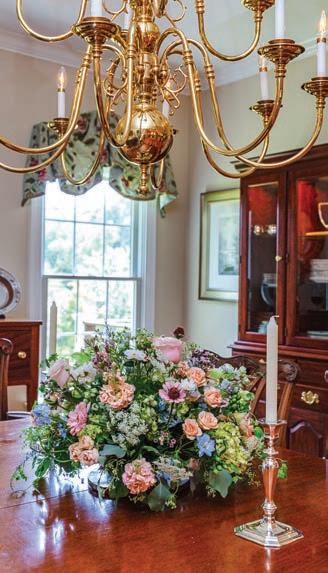
Lisa loves art and displays it throughout the home. In the kitchen, there are two lovely landscapes painted by local artists. A rural farm scene by Preston Mayson and a river vista by Betty Williamson hang by the front door. A bright rooster painting of reds and blues keeps company with the kitchen table and chairs. A cheery needlepoint sign in similar colors hangs on the front doorknob with an invitation, “Please Come In.”
The side of the kitchen opens into a formal dining room where two Z.L. Feng watercolors, framed in heavy gold and silver frames, flank the gorgeous china cabinet. Two large
acrylic paintings by Victor Leitzke of a river scene in muted blues and greens flank the dining room buffet and play off Lisa’s blue and white china collection. Displayed on an antique carved-wood shelf centered over the beautiful bow-front buffet, the delicate china plates balance the heavy sculpted brass chandelier suspended over the polished dining table. An antique gold-and-black mirror topped with a carved-gold eagle and adorned with crystal candlesticks prominently weights a smaller buffet built by Art on the back wall. Its traditional style blends seamlessly with the room’s décor.


The living room and the quiet room each offer space to relax and read. In the living room, there is a magnificent grandfather clock. The clock was inspired by an early 19th century Lancaster County tall clock that is housed in the Winterthur Museum in Delaware. The tiger maple wood came from a Pennsylvania forest in Lancaster County. During the house construction, Art also built the beautiful blue mantel with slate surrounds and the bookshelves that offer display spaces for their collections.

Of note in the quiet room is the ornate walnut secretary with brass handles that Art built in his senior year of high school in 1976. The Stanley Tool Corporation awarded Art the Golden Hammer Award for that year. The block-front drawer style and heavy dental molding top reveal the intricate work required to be authentic to the time period. This traditional piece blends well with the black Chinese-pattern fabric on the wingback chairs and the sizable globe in a wooden stand that sits in a corner.






The powder room wallpaper evokes a playful bohemian look. The blue-and-green patterned leaves seem to dance off their dark branches. An antique wooden mirror over the white pedestal sink ties in Lisa’s elegant mix of traditional and modern. A sculpture-style light fixture solidifies the look.
Down the hall, the primary bedroom has a tray ceiling and is painted a soothing pale blue. The wooden Rice carved bed is outfitted with solid blue-gray bedding. Pink-and-blue floral accent pillows add color. The matching fabric is used on the wing chair that sits in the bedroom corner. A Brett LaGue watercolor painting that they commissioned hangs over the bed. In the primary bath, Art built the long double-sink custom vanity. The fine wood patterns are enriched by the choice of brushed nickel hardware. Lisa’s antique glass-blown vase puts a touch of color on the seamless white countertops.
On the other side of the house, a guest room offers privacy for overnight company. Soft blue bedding is accented with a pink-and-blue floral quilt and pillow shams. Elaine Stephenson helped Lisa find this bedding that pulls the room together. An oil painting of Tinker Mountain by Laura Alexander Coleman Meagher, a native of Charlottesville, then Havana, Cuba; Florida; and New Jersey, is the showstopper in this guest room. Another significant piece is Lisa’s colorful needlepoint pillow. Lisa is quite talented and is an avid fan of needlepoint. Many of her pieces are seen throughout the home.



In the office, a 1935 pastel of Lisa’s mother as a young girl brightens the wall. Set during winter, the matching sweater and hat she wears evokes a Scandinavian influence. On another wall, an oil of boats by Virginia McGuire brings calm color to the room.
Downstairs, an English basement offers space for two more bedrooms, a large family room, another office area and plenty of storage. In one guest room, one of Lisa’s needlepoint pillows — this one of a yellow lab — displays their love of dogs. Both bedrooms are done in serene colors affording the art and the needlepoint pillows she treasures a place to shine. Lisa believes in the power of art. She often says, “Why not?” when she sees a piece of art that speaks to her.

• We are an Andersen-certified contractor.
• We are the only Pella-Certified contractor in Southwest Virginia.
• We are a Trex Pro.
• We are a local, service-disabled, veteran-owned small business (SDVOSB) with a commitment to our community.
• We offer top quality products, design and service to ensure our customers are satisfied with their results.
• We offer one-stop shopping solutions for all your home’s exterior remodeling needs.
• Our team of experienced home improvement specialists handle every aspect of your project from design to completion.
• We start every project with comprehensive planning to ensure on-time completion.
• Combined 65+ years of experience in the industry.
• We combine your vision with our expertise to create the masterpiece you’ve been dreaming of!
















Outside, the flower beds thrive with colorful plants and bulbs. Kai Wolfe and Andreas Panagore of Ecoscape, LLC designed beds full of natives that lead to the river. Kai, an ecologist, seeks to blend the landscape with shrubs and flowers that benefit the homeowner and the environment. Beside the back wall, a bed of irises balances the home’s textured siding with their tall fronds and bright yellow color. There is a trellis along a winding path to a greenhouse — a wonderful spot to start garden plants early. Outside the greenhouse, a table and chairs invite guests to relax and stay awhile at “Our Gathering Place.”
Looking back to the house, the deck and patio provide two more places to unwind. The deck sports a full outdoor kitchen with a pizza oven and a Big Green Egg. A teak table and chairs provide a place to enjoy a meal. Lisa plants succulents in pots for easy color. Art built Lisa an herb table that makes growing and harvesting stress free.
Downstairs, the fire pit area’s black metal chairs entice friends on cool evenings. There is a barn for storage as well as a three-car garage. The drive and paths are constructed from earth-friendly pea gravel. Lantana encircles a black lamppost that lights the path to the front door.
Every detail is flawless, especially the green Hardie Plank siding. Its texture and color ensure this house blends perfectly with the land they carefully chose. ✦

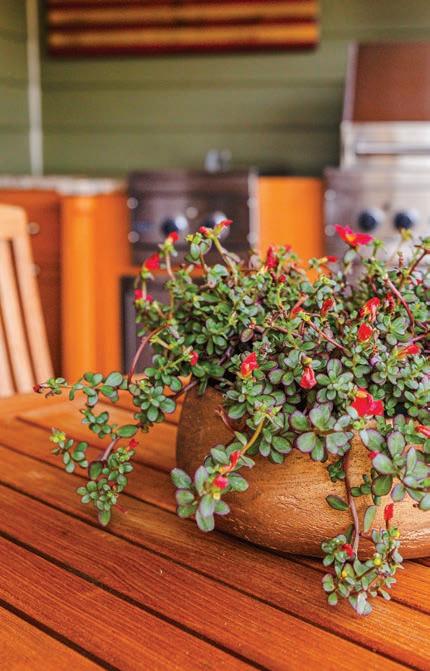

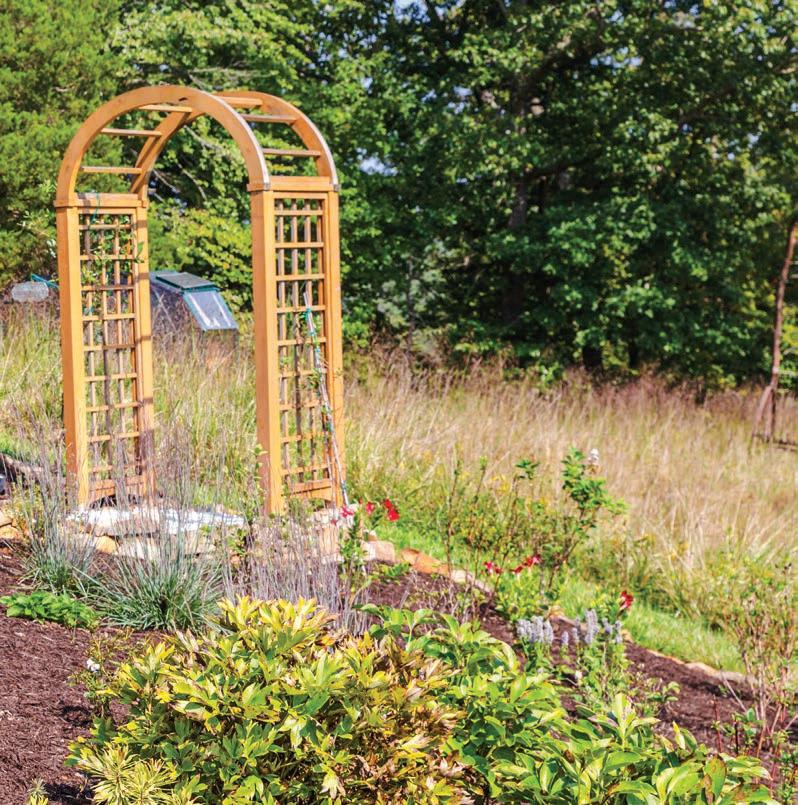

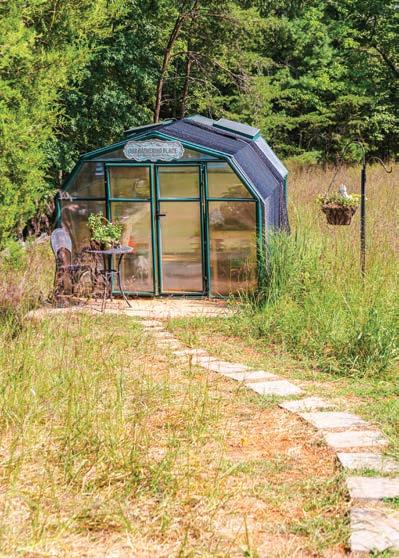


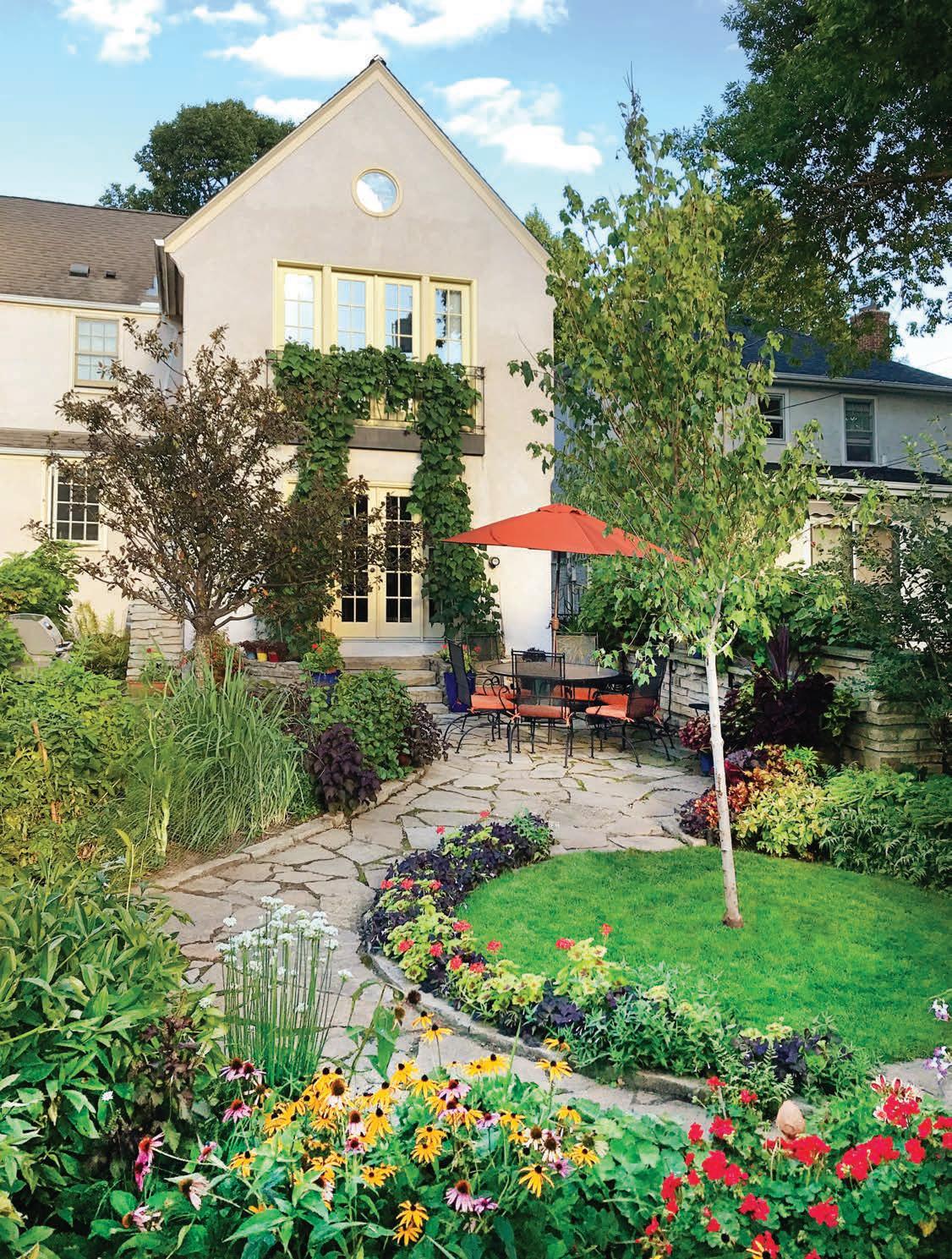
BY CARRIE KNOPF
Since the 1950s and 1960s, neatly manicured lawns have symbolized the ideal American yard. However, more and more homeowners are turning away from traditional landscaping in favor of more sustainable and low-maintenance landscaping options. One such solution is “chaos gardening” — a trend that embraces the beauty of nature through diverse plant life, native grasses and wildflower meadows. This approach offers a visually dynamic and natural look that changes with the seasons, while reducing the effort and expense of lawn care. It also supports local ecosystems by supporting pollinators and native wildlife.
A verdant grassy lawn requires frequent mowing, fertilization and irrigation — practices that are costly and consume valuable resources such as fresh water. Traditional grass lawns also contribute to water waste, create pesticide runoff and use toxic chemicals that can be harmful to humans and pets.
Alternatively, gardeners who plant native grasses, wildflowers and groundcovers create landscapes that mimic nature and require minimal maintenance. By favoring native plants and restoring their yards to a more natural state, chaos gardeners create dynamic and resilient landscapes where birds, bees, butterflies and other pollinators thrive. Here is how you can get started.
5 steps to a chaos garden
Transitioning from a traditional lawn to a chaos garden requires some planning and patience, but will pay off by creating a garden that is less expensive and time consuming to maintain.


Native plants are adapted to local soil and climate conditions, which makes them easier to maintain than non-native species. When selecting plants for your chaos garden, opt for wildflowers, perennial herbs and ornamental grasses that naturally grow in your region. Here are a few popular wildflower and perennials for USDA Zone 7b:
n Black-eyed Susan (Rudbeckia hirta)
n Butterfly Weed (Asclepias tuberosa)
n American Yarrow (Achillea borealis)
n Bee Balm (Monarda didyma)
n Goldenrod (Solidago speciosa)

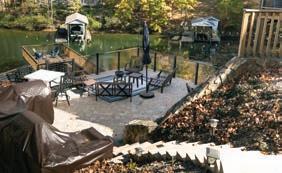

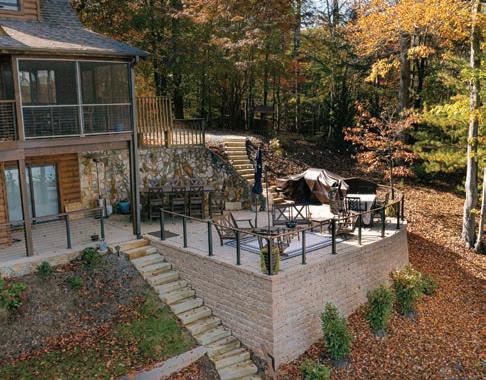


2. INCORPORATE ORNAMENTAL & NATIVE GRASSES
To provide ground coverage without the hassle of mowing, incorporate groundcovers. You can choose one to cover a large area or plant a selection in drifts for visual interest. The following plants spread quickly and require minimal upkeep:
n Big Bluestem (Andropogon gerardii)
n Appalachian Sedge (Carex appalachica)
n Pennsylvania Sedge (Carex pensylvanica)
n Pink Muhly Grass (Muhlenbergia capillaris)
n Purple Lovegrass (Eragrostis spectabilis)
3.
A full lawn replacement doesn’t mean your yard has to look overgrown or untidy. Integrate pathways, hardscaping and mulched areas to define spaces and provide functionality. Patios and decks can extend your living space outdoors and offer comfortable spots for entertaining and relaxing. Boulders and rock gardens can replace grassy areas while adding visual interest and texture. Create pathways with stepping stones, gravel paths or bricks to guide visitors through the natural garden while reducing foot traffic on plants. Add borders and mulched areas to delineate between areas in the garden. Using mulch around plants will reduce weeds and retain moisture, improving soil health and reducing or eliminating the need for watering.

Chaos gardening attracts beneficial insects, birds and small animals to your garden. In addition to selecting native plants, you can make your yard a haven for biodiversity by installing bird feeders, birdbaths and bee hotels.
Leaving some areas of your garden wild with leaf litter, dead wood or undisturbed soil can also provide shelter for beneficial insects and small creatures. Planting a variety of flowering species that bloom throughout the seasons ensures a continuous food source for pollinators such as bees, butterflies and hummingbirds. Avoiding pesticides and herbicides will help maintain a healthy environment for insects, while adding features like rock piles or shallow water sources can further attract pollinators and support a balanced ecosystem in your yard.
Chaos gardens are meant to look natural, and, in contrast to manicured lawns, they offer a visual cornucopia of different plants, textures and colors. The beauty of this method is that each garden is unique and evolves over time, offering a constantly changing landscape abuzz with native plants and pollinators.
If you’re hesitant about completely removing your lawn, consider starting small. Convert a section of your yard into a wildflower meadow or replace a portion of grass with a creeping groundcover. Over time, you can expand these areas as you grow more comfortable with the natural look. ✦
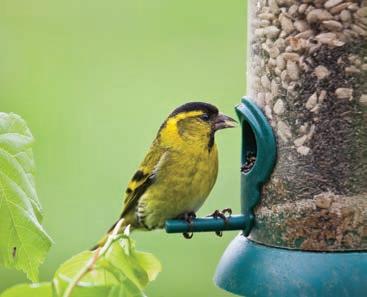


BY MITZI BIBLE
We all want to be ready for retirement, to wake up and enjoy more of the moments that matter most. But dragging financial struggles into this new chapter can put a damper on your hard-earned reward. Devising a solid plan now can help you enter retirement worry-free.



“Will I have enough savings?” “Can I maintain my lifestyle?”




Those are some of the most frequent internet searches regarding retirement. Financial advisors across the Roanoke Valley say being able to answer “yes” with confidence comes down to organizing your assets and developing a strategy to reach your goals.
“People’s worries stem from where they are in life,” says Patrick Ayers, President and CEO of Ayers Financial Services. “If they’re still working, they want to know when they can retire and what quality of life they can afford postretirement. For those who have stopped working, they’re concerned about running out of money and not being able to fulfill their dreams.”


Andy Ingram, President and Owner of Capital Investment Company of Virginia, says while you’ll find many links during a search about how much to invest, for how long and with formulas for retiring at different ages, they don’t take into account other personal factors along the way — like health issues, travel pursuits, charitable giving and the many unexpected, expensive disasters life can throw at us.
“There is no cookie-cutter approach. There are articles out there that support draw down rates of X percentage of X, and those are largely based on a savings figure; that number’s different for everyone,” Ingram says. “It’s more [about taking into account] the full gamut inside of their household. Each client has different goals and objectives for themselves, their families and their businesses.”
Ayers says a proper plan considers your current situation plus “the things that you hope won’t happen but may.”


While financial planners are hesitant to give blanket advice on specific products to a diverse clientele, there are some time-tested rules everyone can follow, including creating good habits early. Start saving in your 20s and be consistent with your contributions — a matching employer contribution can double your savings.
Ingram says, “I tell them to be consistent and diligent … and figure out what can they afford within their budget right now. Younger folks are still establishing credit, trying to get a home, so it’s more about [investing] what fits within your budget that’s not going to impact your lifestyle dramatically.”
When you get a cost of living or merit raise, live off the previous income and contribute the difference to your 401(k). Ayers says the key to investing for retirement is to stay rooted in “rational not reactive” decisions.
“While it’s easy to get emotional when it involves your hard-earned money, it isn’t wise to do so. It is the very nature of the market that things will rise and fall over time, but these fluctuations can be the cause of significant gains — or mistakes — depending upon your reactivity and response.”
Ayers grew up in a family tax business and says incorporating tax planning into your strategy is beneficial: “I often see people who have been saving for years but failed to implement tax-saving strategies.”
Other factors to consider are legacy giving (what you want to leave behind for children and grandchildren) and providing for your spouse if something happens to you.














Planning for the ups and downs is why Ingram prefers to strike the very term “retirement” from retirement planning. “Lifestyle Planning & Investment Management,” he calls it, and it’s something most people can’t do on their own because often our emotions get in the way.

The internet may provide a lot of information fast, but personalized guidance is invaluable.
“Financial advisors bring specialized knowledge and coordinate with other professionals, such as estate lawyers and accountants, to provide comprehensive solutions,” Ingram says. “That coordination ensures that all aspects of that client’s financial life are working together seamlessly … You don’t want to sacrifice life to save for retirement, because life is important and you want to enjoy it. So we talk about what you want to achieve in two years, in five years, 10, 20 and 30, further down the road. [We ask], ‘What do you feel like your lifestyle should be?’ Then you build those objectives into a comprehensive plan to determine if they’re viable goals.”
A study from Herbers & Company, a business management consultancy, shows that people can reduce stress and anxiety by working with a financial professional, and they are three times happier than those who manage their own money.
“I cannot tell you the number of times someone has told me that knowing someone else is actively managing their retirement funds provides an invaluable peacefulness,” Ayers says.
Research from Vanguard also suggests that using an advisor can net you 3 percent or more in returns.
While traditional one-on-one advising is still important for establishing trust, many financial planners are using technology to create detailed plans and communicate with clients. Apps and software can help you see your plan in real time, as spending happens and investments build. If you’re ready to reach out to a financial advisor, research their certifications in the field and years of experience as a fiduciary, a signal that they have taken an oath to do the right thing for their clients, acting in their best interests.
Whether your career and family are just getting started or you’re approaching retirement, advisors can guide you in implementing financial strategies that will produce favorable results.


BY BECKY CALVERT
Nothing says summer quite like biting into a peach so perfectly ripe and luscious that the sweet juice runs down your hands and arms. Those fuzzy gems are quintessentially summer, lending themselves beautifully to both sweet and savory presentations.
The oldest domesticated fruit we have, peaches originated in China at least 4,000 years ago. The Chinese (who are still the biggest peach producers in the world), hold peaches in high regard as a symbol of longevity, immortality and good luck.
The center of the peach contains a hard shell, also known as its stone, which protects the seed. This stone makes for easy long-term storage, allowing peach seeds to become popular for trading on the Silk Road, enabling them to find their way to Europe and later, North America. Introduced to the New World by Spanish Conquistadors, peach trees quickly sprung up in Georgia, the Carolinas and Virginia. Native Americans were early adopters of the peach, and it was their cultivation that led to peaches being introduced across the Americas.


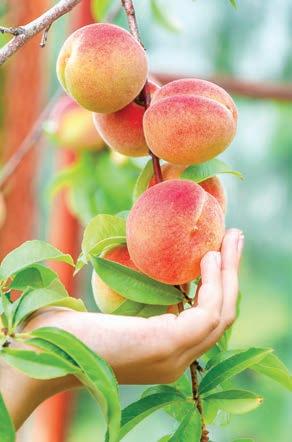


Today, peaches can be found growing around the globe. There are thousands of varieties worldwide, with at least 300 of them grown in the United States. Because there are so many varieties, no single one has risen to become the standout. Peaches are generally labeled by the tone of their flesh (white or yellow although there are also red peaches out there) and grouped into categories according to its relationship with the stone in the center of the fruit. Clingstone, freestone and semi-clingstone are the classifications used to describe how the fruit of the peach clings to the pit containing its seed. There’s also the donutshaped peach, a small flat peach with a dimpled center.
The nectarine, which is often thought of as a relative of the peach, is actually a naturally occurring genetic mutation of the peach. The fuzz is carried on a recessive gene, which nature sometimes deletes. This is how you can occasionally find nectarines growing on the same tree as peaches.
Georgia may be known as the peach state, but it falls behind South Carolina and California in production. Harvested by hand because they bruise easily, peaches are typically picked slightly underripe. They go through a cold-water bath to keep them from becoming overripened during shipping to their final destination. They can also be cleaned, defuzzed and culled in the packing process.
Here in Virginia, we are lucky to have several local orchards, including some pick-your-own farms. Clingstone peaches come into season first, as early as late May/early June, with semiclingstone and freestone varieties arriving later in the season. Our peak peach harvest is July and August, although they remain available until around the middle of September at many local orchards. There are those who claim clingstone peaches have a better flavor, but freestones are decidedly much easier to work with in bulk. If you’ve ever tried to peel and slice a slightly underripe clingstone peach, you know that they are a bit of a beast to deal with.
Historically, white fleshed peaches were considered inferior to the yellow ones. It wasn’t until the 1980s that white peaches

started to make a name for themselves. Delicate in flavor, slightly floral and less acidic, white peaches are sweeter than their yellow counterparts. That lower acid content makes the sweetness more pronounced, removing that tangy bite we associate with peaches. It also makes them unsuitable for preserving, other than freezing, without adding a lot of citric acid, which can affect the taste.
It’s that acidic sweetness that allows peaches to be used in a wide range of dishes. Toss them with other fruits and/or herbs for a quick fruit salad. Grill them until they start to caramelize and serve with ice cream for a wonderful summer dessert. Swap out the ice cream for goat cheese for a savory side dish.
Peaches can be substituted for tomatoes in a wide range of recipes — salsa, caprese salad, gazpacho, panini or paired with pesto, even as a base for barbeque sauce. They pickle beautifully, as first discovered by the Romans as evidenced in a cookbook “De Re Coquinaria” published around 14-37 AD. Of course, there’s always the classic ways to eat peaches — out of hand, tucked into ice cream, baked into a pie or cobbler or preserved in a jam.
When purchasing peaches, look for a consistent gold-toyellow under color. Any red or blush to the exterior of the peach is a product of variety, not ripeness. If the skin has any green shading to it, it is still underripe. They should be soft to the touch, not bruised or mushy. Underripe peaches can sit on a counter for a few days to ripen or place them in a paper bag for a few days to help with the process. Once fully ripe, peaches should stay good in the refrigerator for up to a week.
To peel peaches, a simple blanching usually will suffice. Cut a small X on the bottom before dropping them into a pot of boiling water for 30-60 seconds, following with an ice bath to stop the cooking process. The skins should peel off easily with this process. I will warn you, however, that underripe peaches do not like to give up their skin even with this treatment, so you may still find yourself reaching for that peeler to assist in your task. Toss peaches with a little lemon juice to keep them from browning.
Peaches are nutritional powerhouses, low in calories while filled with vital vitamins (A and C), minerals, anti-oxidants and fiber. Their slight tanginess lends them to working in a wide range of recipes.

Peach Mint Salad
This effortlessly easy dish is perfect for summer picnics and potlucks, especially when everyone else is showing up with caprese salads. 2-3 peaches
Mint (a stalk, maybe two), chopped Squeeze of lemon (about a quarter of a fresh lemon)
Sweetener (about a teaspoon of sugar or honey)
Peel and dice peaches. Toss with lemon juice — I like to use fresh, but a dash of bottled works. Add a spoonful of sweetener — sugar works, as does a spoonful of honey. Add a good handful of chopped mint and mix well. It can be served immediately, but if using slightly under-ripe peaches, let sit for about an hour or more.
PHOTO: JAMES RIVER MEDIA





Pickled peaches, an old-fashioned Southern recipe, can be made as quick pickles or put them in a hot water bath for longer shelf storage. Pickled peaches can be substituted for fresh or canned peaches in pie or a pound cake. They are absolutely fantastic served alongside grilled meat, particularly pork.
3 pounds peaches
500 mg vitamin C tablets (if using fresh peaches)
½ cinnamon stick
1/8 teaspoon whole cloves
1 ½ -inch piece of fresh ginger, cut in large chunks
Cheesecloth bag
1 cup white vinegar
¾ cup water
¾ cup sugar
¼ teaspoon ground allspice
If using fresh peaches, in large non-reactive bowl, crush 500 mg of vitamin C tablets, and combine with 2 quarts cold water. Blanch peaches, then peel, pit and quarter them, dropping into the prepared bowl to keep peaches from browning. (If using frozen peaches, skip this step.) Place cinnamon stick, cloves and ginger in a cheesecloth bag. Combine the vinegar, water, sugar, allspice and bag of spices in a nonreactive pot. Bring to a boil, stirring to dissolve the sugar. Reduce heat, and simmer for 10 minutes. Add the peaches, and gently simmer until they are just heated through. Pack the peaches into clean, sterile jars. Pour the hot syrup over the peaches, leaving ½" headspace. At this point, you can hot-water bathe the jars for 20 minutes if you want them to be shelf stable. Or, let cool, and keep in the refrigerator.
Peach Barbeque Sauce
(Adapted from Preserving by the Pint by Marisa McClellan)
A lighter version than the classic tomato-based sauce, peach barbeque sauce is lovely on white meats such as chicken and pork, as well as fish. Feel free to experiment with adding more hot peppers if you like the heat.
2 pounds peaches
¾ cup cider vinegar
½ cup packed light brown sugar
½ cup minced yellow onion
2 garlic cloves, minced
2 teaspoons salt
2 teaspoons hot pepper flakes
2 teaspoons smoked paprika
Blanch, peel and halve peaches. Combine with remaining ingredients in a saucepan over medium heat. Cover and simmer about 10 minutes, or until peaches and onions start to soften. Mash peaches, and continue to cook, uncovered, until mixture reduces by half, about 45 minutes. Use an immersion blender or food processor to purée mixture until smooth. Taste for seasoning. (Makes 1 pint of sauce.) ✦



BY ASHLEY BLAIR SMITH
You may pay very little attention to your driveway — until it becomes a problematic eyesore. That’s why keeping up on its maintenance is so important to the overall curb appeal and function of your home. Whether your driveway is made from asphalt or concrete, knowing how to properly care for the entrance to your home is key to a beautiful outdoor facade.



First, it’s important to understand the differences between asphalt and concrete. Whether you’re looking to install something new or just want to know how to properly care for the driveway you already have, you’ll want to look into the cost, durability and lifespan of each material.
According to Owner and President of Asphalt Aesthetics John Doughton, the quality between asphalt and concrete can depend on a multitude of factors.
Asphalt is a black, sticky paving material that is composed of aggregates and a petroleum-based binder. It is generally considered the more affordable option for a driveway, with installation costing about a third of the price of concrete. Asphalt tends to be less durable than concrete, but has a good life expectancy of 25-30 years, says Doughton.
Asphalt is a great option for homeowners who aren’t looking to spend a fortune on their driveway; however, “asphalt does require some maintenance such as sealing or crack repair preventative maintenance to ensure longevity,” Doughton says.
Made from a mix of aggregates, cement and water, concrete is a highly durable and customizable option for your driveway. According to Doughton, concrete can structurally withstand compressive strength loads from vehicle traffic at a much greater capacity than asphalt of the same thickness.
Generally, concrete is about 30-50 percent higher in cost than asphalt, but can last substantially longer, from 30-50 years, when installed properly, Doughton says.
Whether you went the route of asphalt or concrete, it’s important to know how to care for your driveway to prevent pesky cracks and stains. It’s also important to know when it’s time to seal and resurface your driveway.
According to Fortress Foundation Solutions System Designer Joe Katany, the lifespan of both asphalt and concrete depends on how well they are taken care of by the homeowner.
It’s a common belief that homeowners should seal their asphalt driveway every two years, but Doughton says that this is not true. “Asphalt does not require any sealing for at least two to four years after initial installation,” Doughton says. “This gives the asphalt binder time to evaporate from the surface leaving void space for the initial coat of sealing to adhere.”
In fact, when multiple layers of asphalt sealer are added onto a new driveway it can be damaging to the asphalt. Not allowing it to breathe “can result in full replacement if not careful,” Doughton says.
Contrary to an asphalt driveway, concrete does require sealing within the initial 30 days of pouring and commonly every two to five years after that, Doughton says.
“For concrete, if your driveway starts flaking or deteriorating, it is time to seal it to prevent any further damage,” Katany says. “If you are unhappy with the appearance of your driveway, you will need to resurface it.”
For cracks in your concrete driveway, Katany advises finding out why it has cracked.
“If it has sunk or settled, it should be lifted and leveled, and then a sealer needs to be applied to the cracks and joints to prevent water from getting underneath the concrete,” Katany says. “Noncompacted dirt and water are the biggest reasons for settled and cracked concrete.”

Less worrisome than cracks but still something you’ll want to take care of are stains on your driveway. If caught early, stains can be soaked up with cat litter, Katany says. However, “the best way to keep concrete clean is to seal the entire area so it will ‘bead’ liquids and not allow stains to be absorbed into the concrete.”
Doughton adds that it’s always good to fix whatever is continuing to leak oil on your driveway, as the petroleum will degrade the binder in both asphalt and concrete over time.
As the gateway to your home, the driveway is the first thing your guests see on arrival. If you want an entrance that stands out and offers you a more elaborate welcome, concrete is a versatile option. “Concrete can be poured in many different finishes for







Gardens are alive these days in intense greens and vibrant florals. For farmers, gardeners and those of us who are dabblers, the season of abundant blooms and produce feels harmonious. Growing flowers and vegetables feeds the soul and fuels the mind.
Gardens offer an annual adventure. For some, it is a cyclical hobby or for others, a full-time vocation, but for everyone who digs in the soil, it is also a constant experiment. The rituals and trials of each year teach us patience and wisdom. There is no secret recipe. It is science, after all.
Dependent upon weather, the other flora and fauna in our ecosystem, and the amount of time dedicated to the garden each year unearths a different rhythm and affords various success stories. Whether it is seeing the first seedlings peek out of the soil or noticing the orchid in your kitchen windowsill sending out a stalk full of new buds, the signs of life evoke a joyous feel of triumph. You are a winner!

Starting with the best material is essential. Interestingly, some of the finest plants come from your neighbors or local growers. These cuttings are stronger, hardier and healthier than ones that live in pots and traverse the country in the back of trucks until they arrive in your neck of the woods. Sharing or passing along plants are the best gifts for new neighbors, friends and even grandkids. Gifting a slip provides an outdoor classroom that gives back a lifetime learning experience.
As Mahatma Gandhi advised, “Live as if you were to die tomorrow. Learn as if you were to live forever.” This advice inspires me to pull out the seed packets and start another pot of treasure. There is plenty of time this month to grow from seed, to ask a neighbor for a slip off their plant that catches your eye on your neighborhood walk or to put some herbs and vegetables in the garden for autumn harvest. Summer is the season to experiment, but gardening is a diversion that gives all year.
For small spaces, consider pot gardens. There are many resourceful ways to use clay pots to grow herbs and vegetables. Set a tomato or pepper plant in a pot, then surround the bottom of the stalk with marigolds or herbs like parsley or oregano. Be sure to water every few days if there isn’t rain. Line up a few of these on a deck or a patio to create a plant screen.
Growing various combinations of vegetables and herbs or flowers brings the garden into the kitchen: produce to add to a meal or herbs and flowers that look lovely and smell wonderful!
Remember to spend time among the plants you choose. Put a chair or bench in the garden. It makes it an inviting spot for summer reading or a place to relax at the end of the day. Wherever your garden lives is a pleasant place to sit quietly and watch your garden grow. That is one of the great joys of summer.

